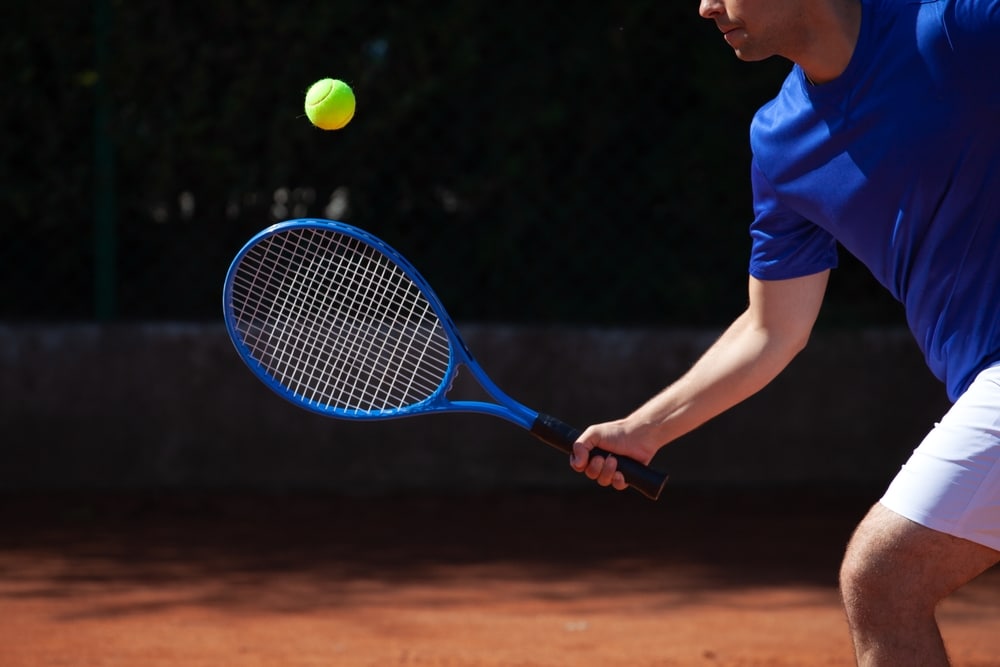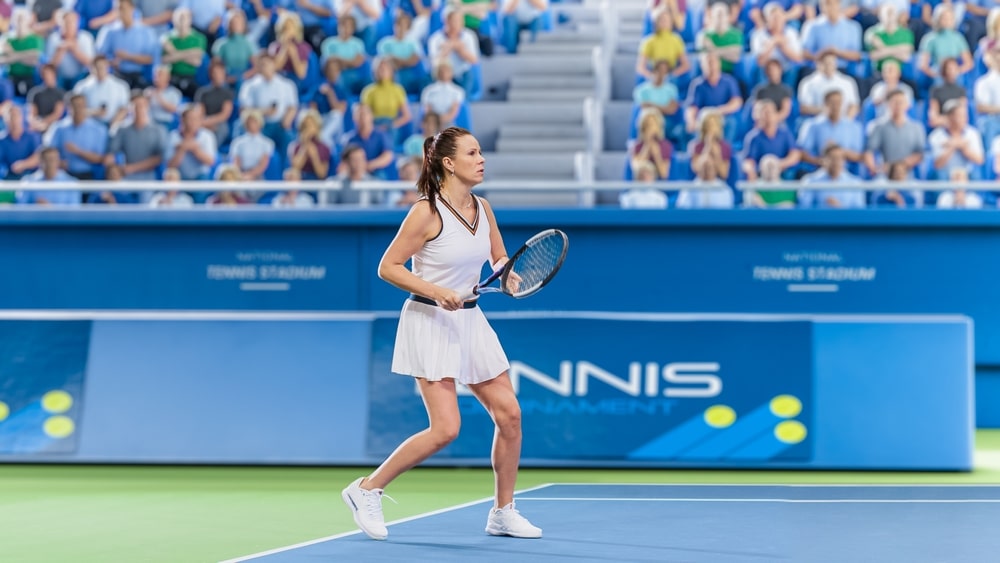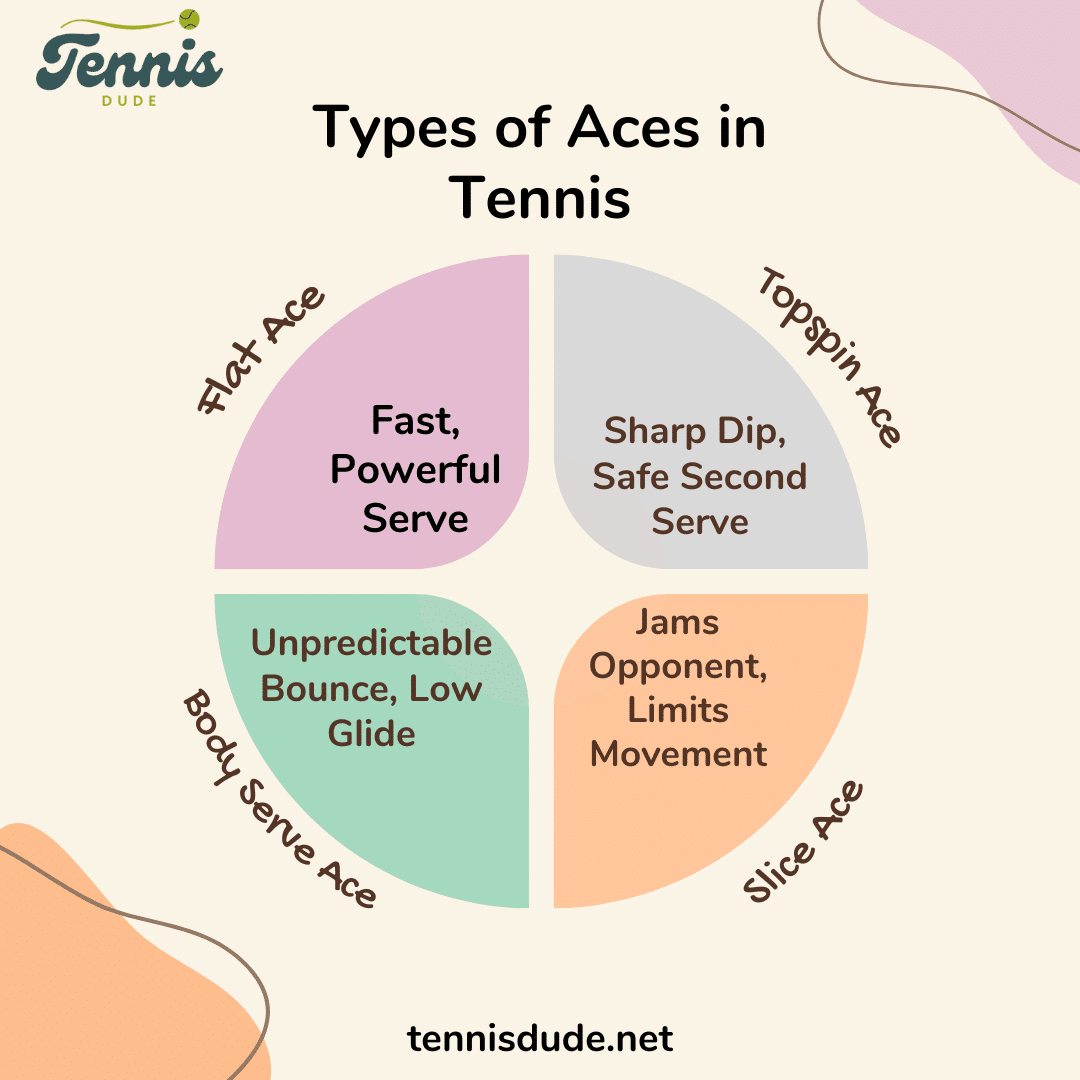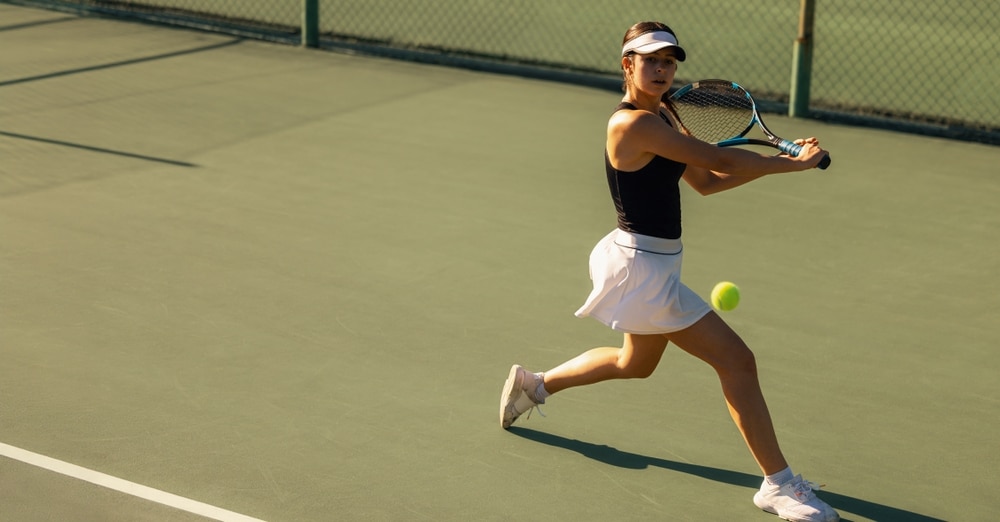Table of Contents
Have you acquainted yourself with basic tennis rules and prepped yourself with tennis shots, yet missed out on the most important shot to practice, i.e., ace in tennis? As much as tennis is being admired by players worldwide, it is important to know how to ace this game by giving your best shot. Ace in tennis refers to a shot where the ball doesn’t touch the racket of the opponent player and serves to get a winning point. How wholesome would it be if your powerful serve is unreturnable by the opponent player? Yes, this can be a winning game for you if you learn how to excel in your ace shot with our comprehensive guide. So, let’s talk about this amazing serve in detail.
What is an Ace in Tennis?
Although there are so many tennis shots, Ace stands out due to its perfection. A serve that is so well-placed and executed in tennis that the opponent is unable to touch the ball with their racket is referred to as an ace. There is no need for more play; the server receives a point right away. The word “ace” itself has an air of superiority and power, signifying the server’s ability to outwit their opponent from the very beginning of a point. So, are you ready to hit an ace following our article guide?
History of Brilliant Shot
Let’s explore the origins of the “ace” — a powerhouse serve that’s become a defining moment in tennis. Originally, an ace meant simply an untouched serve, but over time, it came to symbolize mastery, control, and unmatched precision, earning its celebrated status in the sport!
- Origins: Tennis began in 12th-century France, evolving into modern forms like lawn tennis.
- Etymology: “Ace” derives from the French word as, meaning “one,” reflecting its impactful nature.
- 19th-Century Rules: Once formal rules were set, the ace gained recognition as a key feature of competitive play.
- Today’s Significance: An ace is more than just a point; it’s a showcase of skill, speed, and strategic brilliance.
Technical Concept of an Ace in Tennis
In practical terms, an ace must fulfill several requirements in order to be considered such:
- The serve needs to be lawful and within the bounds of the service box.
- If the receiving player does not make contact with the ball during the attempt to return the serve, they forfeit the point.
This definition emphasizes the need for accuracy when serving, stressing the significance of placement, spin, and speed in obtaining an ace. To execute an effective ace, the server’s grip, stance, and ball toss are all critical components of their technique. Flat serves, slice serves, and topspin serves are frequently combined by advanced players to confuse opponents and raise the possibility of striking an ace.
Exploring Types of Aces in Tennis
Aces in tennis can be categorized according to a variety of parameters due to their differences in style and execution:
- Flat Ace: A serve that relies mostly on speed and accuracy and is delivered with little spin. The fastest serves are usually the flat ones, which can hit above 140 mph, making it hard for opponents to return fire in time.
- Topspin Ace: Dips the ball sharply with topspin, making it difficult for the receiver to return. Second serves are frequently topspin serves, which try to win the point outright while providing a greater margin of safety.
- Slice Ace: Uses a sidespin to move randomly off the bounce, frequently surprising the recipient. Slice serves are especially effective on grass and hard courts, where the ball glides low and away from the opponent.
- Body Serve Ace: Aim at the receiver’s body, impeding their range of motion and capacity to make a successful comeback. This kind of serve has the ability to jam the opposition, resulting in a feeble or nonexistent return.
Each kind demonstrates how the server can alter its strategy to take advantage of the opponent’s flaws and increase its lead. Furthermore, the playing surface, the opponent’s deficiencies, and the server’s personal strengths can all impact the serve selection.
The Significance of Strategy in Ace Tennis
The ace affects the score right away, but it also has a significant impact on how the match unfolds:
- Aces can demoralize opponents and cast doubt on their ability to break serve, giving them a psychological advantage. When John Isner hits aces on a regular basis, the opponent feels under pressure because the server exudes an air of invincibility.
- Strategic Tool: During pivotal moments in a match, servers frequently employ aces tactically to preserve energy and momentum. For example, Sam Querrey has a reputation for using his strong serve to terminate points and save energy quickly.
- Game Changer: A well-placed ace can change momentum drastically in the server’s advantage in tiebreaks or close sets. Great servers have the ability to deliver an ace under duress.
Gaining knowledge about these strategic aspects highlights the importance of perfecting the technique of serving aces as a primary goal for players aiming to compete at all levels. To maximize the number of aces and service winners, coaches and players frequently examine serve patterns and adapt their tactics to improve the efficacy of their serves.
You can check out several strategies for ace in tennis in this article.
Records and Notable Players of Ace in Tennis
A few tennis players in history have become legendary partly because of their skill at serving aces:
- John Isner: His strong serves and endurance during matches have earned him the title of having the most aces in a single match (113 against Nicolas Mahut at Wimbledon 2010) as well as lifetime records. Isner has a major edge in power and angle when serving because of his height (6’10”).
- Serena Williams: Her ability to serve aces has been a key factor in her success on all surfaces, making her a formidable force in women’s tennis. People regard Williams’ serve, which combines power, placement, and disguise, as one of the best in women’s tennis history.
- Ivanišević, Goran: He is well-known for his left-handed serves and impressive ace total, which perfectly encapsulates the effect of aces on match results. Ivanišević served 213 aces during the Wimbledon tournament, and his serve proved to be a key factor in his victory.
- Roger Federer: Throughout his career, Federer, renowned for his accuracy and variety, has strategically used aces to maintain control in his service games. His capacity to serve aces under stress has largely been attributed to his success.
Their ability to regularly hit an ace increases their status and influence within the sport. In addition to breaking records, these players have motivated upcoming generations to prioritize strengthening their serve as a key component of their performance.
Impact of Ace on Dynamics of the Game
Aces are shaking up tennis in a big way—here’s the scoop:
- Serving Dominance
Power serving means fewer rallies and more “whoa, did you see that?” moments. It’s like a fast-food tennis match—quick bites, no time to chew! - Entertainment Value
Aces add a sprinkle of excitement. Fans love the sound, the flash, and the instant “Point!”—it’s like the game’s version of fireworks. - Statistical Analysis
Coaches are now data wizards, crunching numbers on ace rates like they’re playing fantasy tennis. Who knew math could be so thrilling? - Technological Advancements:
With radar guns and high-speed cameras, players can analyze their serves like they’re critiquing a movie. “Not enough spin, too much drama!”
Technique and Training for Ace in Tennis
Apart from knowing what is considered an ace in tennis, you should practice hitting this serve so as to become a pro. To become an ace, one must combine technical proficiency, mental toughness, and physical conditioning:
- Physical Conditioning: To maintain serve accuracy and generate power, it is imperative to engage in strength and flexibility training, specifically targeting the shoulder and core.
- Technical Refinement: Players can increase the effectiveness of their serves by practicing drills that concentrate on ball throw consistency, serve mechanics, and placement. Video analysis is a useful tool for tracking advancement and identifying problem areas.
- Mental Preparation: Players can improve their serve confidence, especially under pressure, using visualization techniques and mental practices. To play your best when things count, you need to have mental toughness.
Pro players frequently spend a lot of practice time on serving. However, they use a range of drills and workouts to improve their technique. This all-encompassing strategy guarantees that they are ready to perform at their best when it counts most.
Conclusion
Summing up, the article covered a detailed analysis of ace serves in tennis. Apart from delving deep into its definition, this article focuses on strategies and the importance of this brilliant winning shot for tennis lovers. So, read the above-mentioned detailed information and get ready to become a pro.
Ace Your Game!






